- Featured
- Animal Rights
- Anti-racism
- Arts & Culture
- Children
- Climate
- Corporate accountability
- Crime
- Disability rights
- Economic
- Education
- Environment
- Food and Sustainable Production
- Gender Equality
- Governance and Transparency
- Health
- Housing
- LGBT Rights
- Mental health
- Northern Ireland
- Planning
- Privacy and Data Protection
- Rural Inequality
- Social Justice
- Trade
- Transport and Infrastructure
- Workers' Rights
- More
-
SAY NO TO SEAL CULLThere are two species of seals in Irish waters, the grey and the harbour seal but in recent years Artic visitors such as bearded, walrus and most recently a hooded seal have arrived on our shores. We have many things to learn about how seals use our coastline and these species are protected under the Wildlife Act, 1976 and its amendments and the EU Habitats Directive as they are important indicators of ecosystem health. Indeed the recent sightings of such northerly species have been a cause for concern and it is of interest that we monitor such important indicator species in a time when the planet faces climate crises and is undergoing the 6th Mass Extinction. Read more here: https://www.orcireland.ie/call-to-cull-seals-in-irish-waters and here: http://www.ecoevoblog.com/2019/03/05/seal-cull/711 of 800 SignaturesCreated by ORCA Ireland Ocean Research & Conservation Association

-
STOP COMMERCIAL WHALING NOW! Boycott Japanese Products and Services in the EU.It has been a devastating year for environmentalists and ocean advocates all over the world as Japan withdrew from the International Whaling Commission (IWC) on July 1st 2019 and re-commenced commercial whaling for the first time in over 30 years. For many years Japanese whalers hunted whales in Japanese and Antarctic waters under the guide if "scientific whaling", now although not fishing in protected waters of the deep southern ocean, they have began commercial hunting of whales in Japanese waters. In 2019, Japanese whalers killer 232 whales , including 187 Byrde's whales, 25 sei whales, and 11 minke whales. Despite global out-cry and a dwindling demand for whale meat consumption in the country, the Japanese government have now passed a law to fund commercial whale hunts and to promote the consumption of whale meat in schools, despite the meat being highly toxic and dangerous for human health. Read more: https://www.orcireland.ie/japanese-whalers-kill-223-whales-completing-their-first-hunt-in-over-three-decades Read more: https://www.orcireland.ie/japanese-government-to-fund-more-whale-hunts The slaughter of protected species like minke, Bryde's and sei whales are brutal and horrific, as whales are harpooned, sometimes with explosives. On contact with the animal, the harpoon spread open to prevent the whale from escaping and death is slow and excruciatingly painful. Whale populations around the world are facing a multitude of human impacts from plastic pollution to overfishing and entailments, the last thing the world's marine biodiversity needs is further over exploitation and abuse. Please SIGN our Petition to urge Japans Prime Minister, Shinzo Abe to STOP JAPAN COMMERCIAL WHALING to protect cetacean species in Japanese waters instead of slaughtering them for profit and boycott Japanese goods and services until they END WHALING. Please sign to urge Japans Ambassador Mitsuru Kitano to urge Japanese officials to END COMMERCIAL WHALE HUNTS in a bid to tackle the world's biodiversity loss crises! Join us for a protest outside the Embassy of Japan in Ireland, Dublin on February 13th to celebrate World Whale Day 2020.86 of 100 SignaturesCreated by ORCA Ireland Ocean Research & Conservation Association

-
Issue Michael creed minister for agriculture with p45Its extremely important that farmers take the time to sighn this petition , as I feel its the first step and only step in rectifying the great imbalances that farmers are experiencing, when we as independent farmers elect our own representative to hold position as minister for agriculture, then we as a farming community can work towards resolving farmers issues re instating farmers rights equality something that is being rashioned at present, we can resolve the great imbalances being experienced11 of 100 SignaturesCreated by Peter Curran
-
Stop Greyhound Exploitation in IrelandThe Irish government has given a quarter of a BILLION euro to the IGB since 2001 . 16.8 million a year to fund a non charity that encourages drinking and gambling , kills dogs and gives nothing to the community. The IGB cannot support itself as a business and uses OUR MONEY where it should be spent on health care , the homeless, cancer research and many more genuine causes. 6000 plus young Greyhounds are killed each year because they cannot run fast enough for commercial use . Greyhounds are brutally killed with bolt gun in knackeries for as little as €8 or just shot and dumped in pits many found in mountain rural settings . Hundreds of dogs are killed in stadiums where they fall and are killed if they even break a toe as it’s not economical to keep . Each race track has a freezer for the many murdered dogs . Dogs are doped and young dogs often drop dead of a heart attack. Many heart attacks are caused by cocaine . Ireland is one of only a few archaic countries that still allow Coursing with live hares . Thousands of hares are caught each year fenced in and chased by two greyhounds who even if muzzled throw the hare around ,pin it to the ground and get broken up themselves in the process .all this they call entertainment. Ireland breeds 1000% more greyhounds than required for Ireland’s racing circuit to allow a large Poole if pups to choose from . Also approx 80%plus of all dogs raced on the UK are Irish such is our overbreeding . Many greyhounds when they can no longer race are sent to barbaric countries where there is no animal laws and are sent to stud or to breed in horrific conditions where they could end up when that use runs out : cooked alive and eaten . In Ireland Greyhounds are not even classified or run as a sport greyhound racing is under the ministry of agriculture and greyhounds are not classified as dogs but as “ Farm animal “ and are not seen as dogs but they are .1,775 of 2,000 SignaturesCreated by OPAGE Ordinary people against greyhound exploitation

-
Abolish Intensive & Factory Animal Farming in IrelandAlong with the listings of animal cruelty above, industrial factory factory farming is a major contributor to water and air pollution as well as deforestation. ... This can contaminate local water supplies, reach neighboring populations physically and in a sensorial capacity, and emit harmful gasses. Likewise, livestock release methane gas during their digestion process which accounts for and directly contributes to climate change.977 of 1,000 SignaturesCreated by Roscommon Animal Rights
-
Right to Life at a Vegan Sanctuary for SheepThese sheep were apparently left for 4 days in a flooded field with nothing to eat, no shelter and unable to even lie down and rest as they awaited slaughter at Kepak Athleague in Roscommon. One of them died as a result of severe neglect. It is their right not to be killed. They have already suffered enough. Eden Farmed Animal Sanctuary will offer them a home for life at our vegan sanctuary where they will be cared for and where their rights will be respected. Please encourage media to cover their story and encourage Kepak to let them go to our sanctuary.1,100 of 2,000 SignaturesCreated by Eden Farmed Animal Sanctuary
-
Save Our Sheep SOS!!!Today a great kindness was done by concerned citizens who rescued sheep that had been brought to Kepak Slaughterhouse Athleague for slaughter on Friday but left in dire conditions without food or shelter in rain and flooding. Having contacted both Kepac Slaughterhouse and the Department of Agriculture who didn't take any action to help these vulnerable animals and seeing that one of the sheep had already died in these horrendous conditions, these brave people put themselves at risk and went out in a Kayak to bring the 9 waterlogged sheep to safety and drier land. The sheep had to be guided to safety by following the Kayak which took immense effort on the part of the rescuers and the sheep must have been so terrified. Now Kepak insist they are coming to take them for slaughter having had zero interest in meeting their welfare needs when requested. Please share this post widely and bring to light the shocking practices of these corporates whose only interest is profit... Please let these individuals have a chance at life with the kind people who brought them to safety... The option of sanctuary is just a share away for these souls!!! Please tag the media and all animal rights groups in your posts 💚785 of 800 SignaturesCreated by Maya Wall
-
Preserve Bird Habitat in EnnisBird Habitat is the last remaining natural area in Ennis town, and it is the center of attraction for our local community. The river bend in the center of town hosts various Birds, including; the Canadian geese and Greylag goose that have mixed with the Local Domestic goose, they are an affectionately viewed by us 'Ennis-eans' and passers by enjoy the entertaining display of the Mute Swans, Herons and Mallard ducks. We want our appreciation of nature as an inheritance for our future generation. Not only that, the Birds on the river Fergus enhance town's tourists attraction and are a center of interest for local business. Feeding the birds are a relaxing activity from the stress, and a quite time out for kids and parents on their way to and from the buzz of life.35 of 100 SignaturesCreated by Vera Raftery
-
End Irish Government funding of the greyhound industrySee RTE Investigates documentary - it is unacceptable that Irish taxpayers are being asked to fund an industry that is rotten to its core and is responsible for barbaric, inhumane and unethical treatment of animals. Funding from our government is fueling the production of dogs for racing, many of whom end up inhumanely treated (including being boiled alive) and illegally culled. No public monies should find their way into the greyhound industry. For further information see: https://www.rte.ie/player/movie/rt%C3%A9-investigates-greyhounds-running-for-their-lives/104051751967 Note: the content of this documentary is profoundly disturbing and not for those sensitive to the abuse of sensient creatures.119 of 200 SignaturesCreated by Teresa Mchale
-
Donegal County Council: Ban Roundup NowOur beautiful planet has reached a dangerous toxic load of Roundup weedkiller. In 2018 over 5 billion pounds of it was spread worldwide and this will rise each year if we do not stop it. Roundup's makers, Monsanto, have been proven in numerous high profile lawsuits to have hidden the scientific proof that it does not, as they claimed in the 1970s, break down in the soil; it remains active and therefore harmful for at least ten years. Yet still we spray. The fact that is does not break down is evidenced by it being found in urine and breast milk samples, and organic honeys which are nowhere near spraying. It is, at this stage, everywhere. It has been proven to attack beneficial bacteria in all lifeforms, including humans, and is linked to numerous diseases including cancers, celiac disease, autism and gluten intolerance. It is proven to kill honeybees and other pollinators, and has been implicated in the ill health and death of dogs and other pets. The only reason it is still on the shelves is because our business-focused governments keep lobbying to keep it there. We are essentially putting the profits of corporations above the health and future of our planet. This is insanity. The only way we are going to stop the spraying is by pressuring those in the newly formed council to wake up and take action; to remind them their jobs are to serve the community's healthy and well-being, not amass wealth for an elite class. Look around your towns and countryside, and when you see Roundup sprayed speak up. Tell people that there are much healthier and cheaper alternatives. See recipes here: https://garden.lovetoknow.com/wiki/Recipe_for_Vinegar_Weed_Killer535 of 600 SignaturesCreated by Aoife Valley
-
Make crisps packets compostable.If a packet is not disposed of correctly, it ends up as litter. A wild animal can mistake this for food, especially if it get into the sea and larger mammals can mistake a crisp packet for a fish (as was the case for a poor seal in 2018, it only took one packet to block his intestine). Current packets are not recyclable and it is a better option to make the packets compostable so that they can be placed into a brown bin for collection.78 of 100 SignaturesCreated by Kevin Murphy

-
Say No To Bottom Dredging Mussel Farm, Kinsale Harbour, CorkTo date, 25 species of cetaceans have been recorded in Irish waters (Lusher at al., 2018). All cetaceans, pinnipeds; including harbour seals (Phoca vitulina) and the Eurasian otter (Lutra lutra) are protected in Ireland under a range of national and international legislation. Under the Wildlife Act (1976) and amendments (2000, 2005, 2010 and 2012), it is an offence to intentionally hunt, injure, wilfully interfere with or disturb or destroy the resting or breeding place of a protected species (except under licence or permit from the department). The 1976 Wildlife Act applies out to the 12 nm limit of Irish territorial waters. Additionally, all cetaceans, pinnipeds and otter and are protected under the EU Habitats Directive, where all cetaceans are included in Annex IV of the Directive as species ‘in need of strict protection’. Under this Directive, the harbour porpoise, bottlenose dolphin (Tursiops truncatus), grey seal, harbour seal and Eurasian Otter are listed under Annex II, which identifies these species of community interest and whose conservation requires the designation of Special Areas of Conservation (SACs) (O’ Brien, 2016). 3. Man-made noise generated from dredging operations, both from the physical presence of the dredger, and increased water turbidity within the area have potential to cause low levels of disturbance, including the masking of communication and induce behavioural impacts such as displacement from important habitat (O’Brien, 2016). Recently published literature on the impacts of dredging on marine mammals in Aberdeen Harbour found that bottlenose dolphins exhibited avoidance behaviour to dredging in a highly urbanised foraging patch, despite the expected high level of tolerance given the high level of vessel activity in the area (Pirotta et al., 2013). A similar review by Todd et al., (2014) found that in regard to dredging activities, the effect on marine mammals depends on the type of dredger used, state of operation, local sound propagation conditions and the receiver’s sensitivity and bandwidth of hearing. It also highlighted the potential for accidental collision with marine mammals. The review concluded that noise from dredging although perceived as being below the injury threshold for permanent hearing loss (PTS), according to criteria outlined in Southall et al., (2007), highlighted the potential for temporary damage to hearing (TTS) to marine mammals, such as the harbour porpoise after prolonged periods of exposure, also found in a more recent study (Kastelein et al., 2012). Indirect impacts from exposure of marine mammals to anthropogenic noise from dredging operations can result in changes to protected species physical environments, affecting prey distribution and introducing toxins and pollutants from dredge spoil.333 of 400 SignaturesCreated by ORCA Ireland Ocean Research & Conservation Association

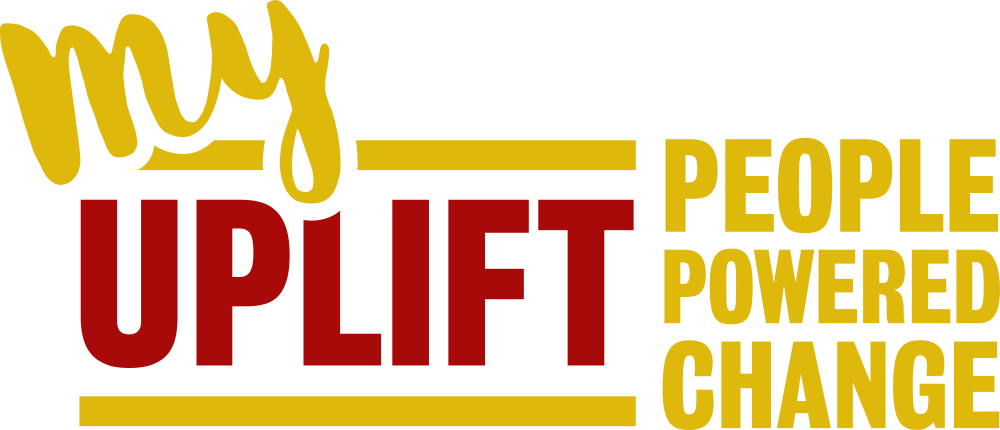
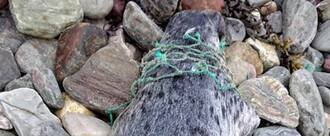



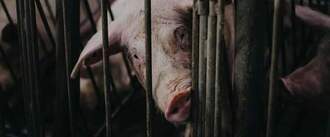
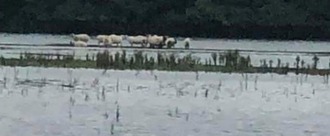
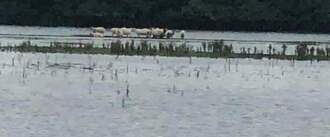
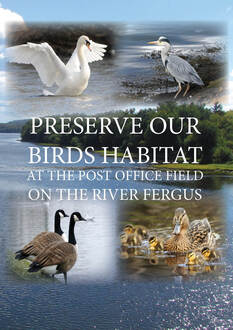
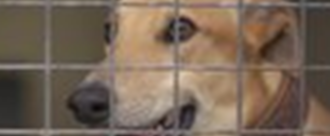.png)


